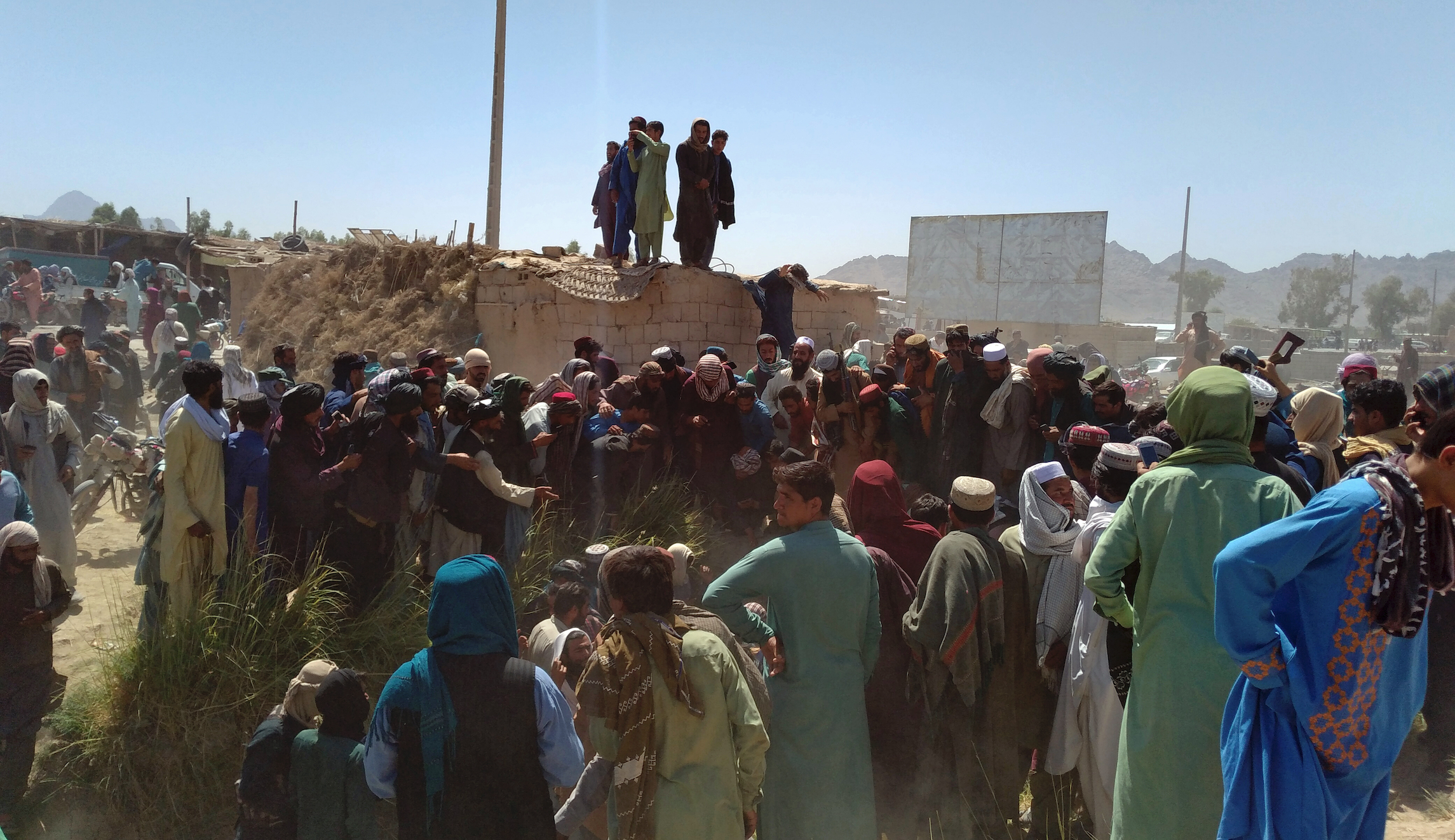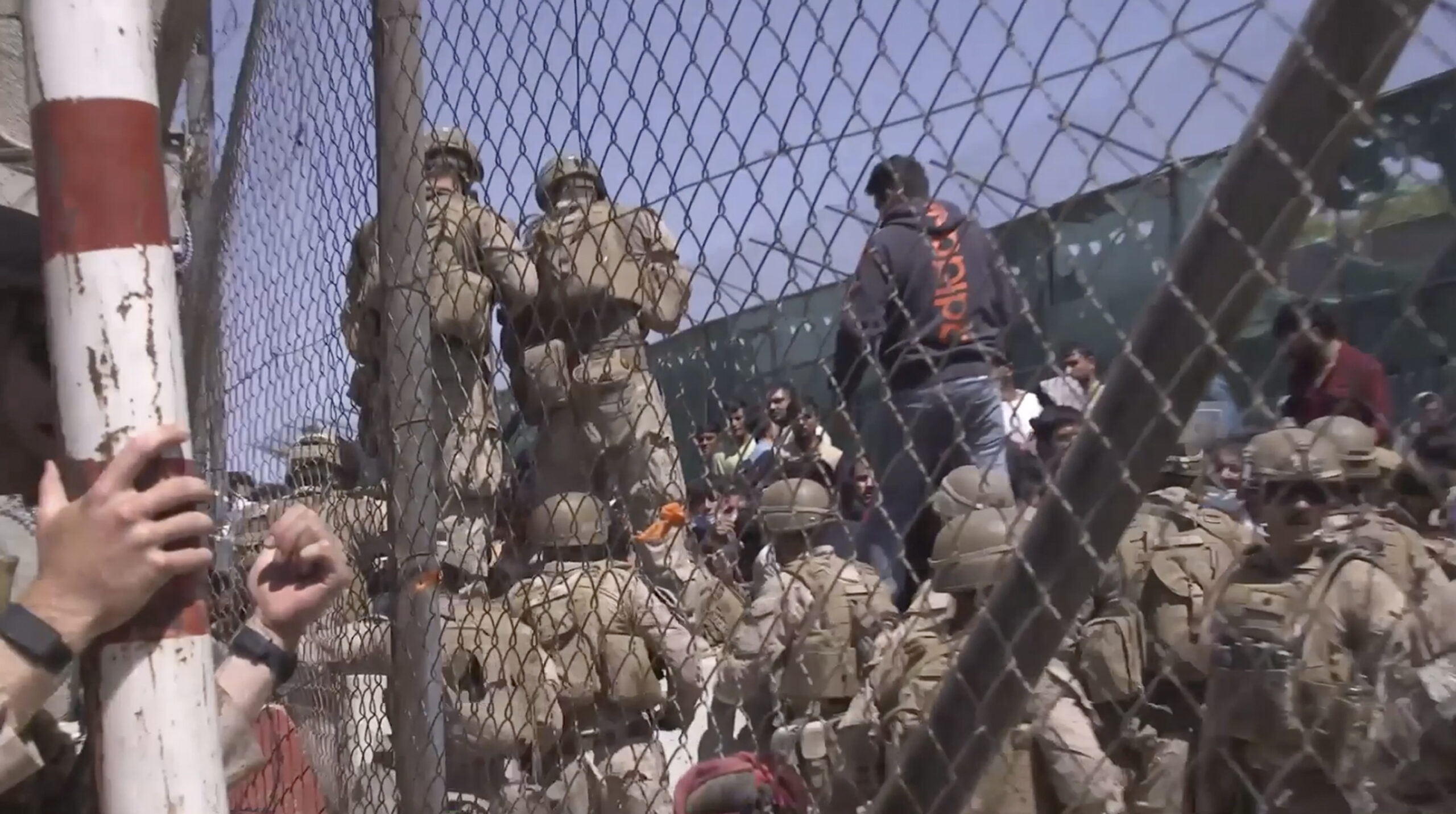Lt. Scott Mann, a former Green Beret, was brought back into the world of military operations and life-or-death decision-making when he and other veterans banded together to help get their Afghan friends and colleagues out of Afghanistan before the military withdrew last year as the Taliban rose to power.
Mann enlisted a band of colleagues, friends, and others with defense, intelligence, and national security backgrounds to coordinate a way to evacuate an Afghan commando friend with whom he had served, and he detailed their efforts in a new book titled Operation Pineapple Express, which is set to be released at the end of August. The Washington Examiner obtained an advanced copy.
As the only lifeline to many trapped Afghan allies, Mann described veterans feeling like they had been “on the world’s longest 911 call.”
“Everybody was exhausted [and] depleted,” Mann said in an interview about the prolonged evacuation efforts. “The moral injury that resulted from this, the guilt you felt over losing people over the winter who were counting on you and the inability to do anything to help people that were in such a desperate situation as they were being hunted.”
The Taliban took control of Kabul and President Ashraf Ghani fled on Aug. 15, 2021, setting in motion the conditions for the United States to launch what ultimately became the largest noncombatant evacuation operation. Thousands of onetime Afghan soldiers reached out to American friends, begging for help getting them through the gates at Hamid Karzai International Airport because remaining in Afghanistan meant a possible death sentence if the Taliban uncovered their identity.
Countless members of the U.S. veteran community dropped everything and missed birthdays and special events with their families to dedicate their lives to helping their friends get out of Afghanistan from roughly 7,000 miles away. Many teams formed, while other preestablished groups refocused their efforts on helping evacuate Afghans.
At the time, the U.S. military and allies were conducting their evacuation efforts at the Hamid Karzai International Airport in Kabul but didn’t have enough manpower to control the crowd of thousands of Afghans all funneling into a handful of entrances to get people on planes, as well as maintain security. With little food and water, thousands of Afghans descended upon the airport in the brutal sun with the hope of getting through the gates every day for the two weeks of August.
Representatives from some of those groups spoke to the Washington Examiner ahead of the one-year withdrawal anniversary. They each spoke glowingly of the veterans who have led evacuation steps while describing the heavy toll the effort has taken and the long road ahead to get everyone safely out of Afghanistan.
Mann was brought back into that world when Nezamuddin Nezami, nicknamed Nezam, an Afghan commando with whom he had served, reached out, desperate for a way out of Afghanistan, knowing that he was facing near certain death if the Taliban discovered his identity and connection to Afghan Special Forces.
Mann and his colleagues worked to find a way to get Nezam through the gates at the Kabul airport, even though he didn’t have a Special Immigrant Visa, or SIV, and his application had been in limbo.

Nezam, who spent years in various roles with the Afghan military and even participated in the U.S. Army Special Forces Q Course at Fort Bragg, reached out to Mann periodically during the final weeks of the U.S. military’s time in Afghanistan, when his communications became direr. After unsuccessful attempts at getting through the gates at the airport, he finally succeeded by crowding in tight with a family brandishing American passports, but he was then met with additional security that required a U.S. visa. Through the web of operators in the U.S., it was relayed to Nezam that the code word to get him through was “pineapple.”
There were thousands of Afghan soldiers like Nezam who had fought alongside U.S. service members whose lives were in jeopardy in Taliban territory.
Task Force Pineapple began bringing more people into their team, most of whom had their own Afghan friends who needed help.
Shortly after Nezam got through, Mann heard from a retired Marine named Art with contacts in the CIA, and the agency was requesting that Task Force Pineapple help get an American citizen named Qais and his family members to the airport. The family, composed of some U.S. citizens but not all, went to Afghanistan in July and got trapped by the collapse of the government. The book did not provide last names or additional details about Art or Qais.
Zac Lois, a former Green Beret and Pineapple member who is a social studies teacher in Syracuse, then hatched Operation Harriet, named after Harriet Tubman, who served as an instrumental leader of the Underground Railroad movement. Lois’s plan, which was predicated on the help of service members on the ground, would be that the families whom they were looking to help escape would head to a specific access point of the airport at night, where a service member would be waiting to confirm their identity before scurrying them through, though the process of getting there was not easy.
Everyone’s worst nightmares became a reality on Aug. 26, when an ISIS-K suicide bomber detonated an explosive device at the Abbey Gate that killed 13 U.S. service members and roughly another 170 Afghan civilians. Following the blasts, the group’s goals became nearly impossible as the military closed the gates, though the relationships U.S. veterans had with the Afghans who got out and those who were left behind continued.

Shawn VanDiver, the founder of #AfghanEvac, one of the groups that helped get Afghans out, touched on the struggles many former and current service members may go through as the anniversary comes and goes.
“August is going to really f***ing suck,” he stated. “We’re all going to need each other, and this shared experience that the government, the Afghans, and volunteers had, I think, is worth talking about. But we have to respect the idea that if we get too detailed in the current operations, that could disrupt those current operations.”
The #AfghanEvac coalition is a nonprofit group made up of Afghans, U.S. veterans, front-line civilians, and national security and intelligence community officials who work together to help Afghans in ways ranging from relocation opportunities to humanitarian support on the ground. The coalition is made up of more than 180 organizations.
Over the last year, the group has met with Secretary of State Antony Blinken a handful of times, while VanDiver spoke highly of Curtis Ried, a career foreign service officer and National Security Council official who was appointed as special adviser on Afghan resettlement, though he said the relationship needed time to build trust between the two sides. Ried has since attended multiple meetings with the group, and VanDiver called him an “absolutely incredible partner.”
No One Left Behind was one of the organizations that predated the withdrawal but shifted its focus to evacuation efforts. The group dedicated to “supporting former interpreters and U.S. government employees eligible for the Iraqi and Afghan Special Immigrant Visa (SIV) programs” has since turned its attention to advocating legislative changes to help Afghan resettlement and relocation efforts.
Jeff Phaneuf, a USMC veteran and director of advocacy with No One Left Behind, told the Washington Examiner that they “had hoped we’ll be able to resolve this pretty quickly,” but the outlook is not “something that’s going to resolve next month or next year, but something that might be a 10- to 15-year process.”

Task Force Pineapple and No One Left Behind each got roughly 500 or so people out of Afghanistan, they say, though they weren’t able to save thousands of others who sought to escape. Many of them remain in Afghanistan without the appropriate documentation necessary to immigrate to the U.S., though advocacy groups have sought to persuade the administration and Congress to ease certain regulations to make it an easier process.
CLICK HERE TO READ MORE FROM THE WASHINGTON EXAMINER
Phaneuf said the group wants “a lot of fixes that streamline the [Special Immigrant Visa Program] process but also ensure[s] that the program goes forward in the future,” specifically, “calling for a permanent and enduring version of the [SIV program] that closes some of the gaps that the current legislation holds.”
Through the turbulence of the last year, the groups maintain that they rose to the occasion when the government failed to uphold the promise it made to Afghans they leaned on for 20 years.
“The only thing I would say is that in spite of everything that I’ve just told you, at the end of the day, I’m actually pretty upbeat about what happened with all of this, but after digging into it for a year,” Mann concluded. “You know, the big takeaway I had was that when institutional leadership failed, the moral compass of our nation stepped forward, like our veterans and these other volunteers, they actually stepped into the breach. And you know, even though it was an Uncle Sam-sized problem, they really did everything they could to fill the gap.”
Nezam now has a Florida driver’s license and lives with his wife and children in Tampa, where he is working on his GED. Mann is training him to be a story coach to assist other veterans.

